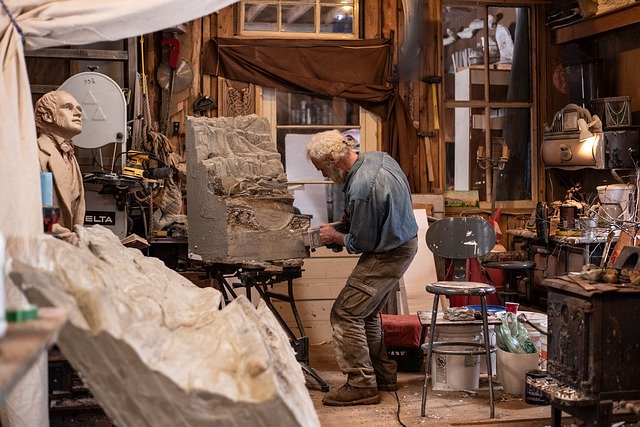Lighting in an art studio is essential. Whether you are working with paint, textiles, sculpting material, or another medium, you need to be able to see texture, shape, and colour clearly and as true to life as possible.
The best type of fixture may vary depending on the application. Do you need something bigger to illuminate larger pieces or something smaller and more precise to work on a miniature scale? Remember to consider your specific needs when making key decisions about your setup.
Connect Electric wants to help you get started with the basics of choosing lights for an art studio.
Balance Your Correlated Colour Temperature
Correlated colour temperature (CCT) refers to the scale used to determine whether light is warm or cool. The warmth or coolness of a light bulb will affect the appearance of objects viewed under it. For example, warmer illumination will add gold or yellow hue while cooler lights may make surfaces appear bluer.
The CCT scale uses Kelvin (K) as a measurement. This is the rating you want to look at when picking lights out for your art studio. Higher numbers indicate cooler light and lower numbers indicate warmer light.
To put it into perspective, traditional candlelight falls into the 2,000K to 2,700K range. Incandescent lights are usually around 2,700K to 3,000K. Fluorescent bulbs usually produce light in the 3,800K to 4,400K range.
On an overcast day, the light is usually between 6,000K and 6,500K. Sunlight viewed around noon on a clear day is usually around 5,500K. Most art studios do well with bulbs that are around 5,500K. You can also go up to 7,500K if you prefer a cooler hue.
Understanding the Colour Rendering Index
The colour rendering index (CRI) is another scale that’s used to show how a light source reveals colours. It includes both shades interpreted by the human eye as well as subtle variations. The scale ranges from 0 to 100% and indicates how accurate the light source is at showing colour compared to a reference light source.
Sunlight has a CRI of 100. You should look for lighting that is at or close to the same rating. A good range is 80 to 100 CRI. This will give you natural hues that appear vibrant.
Choosing the Right Luminosity for Your Studio
Achieving the ideal luminosity, or brightness may require multiple fixtures in your workspace. It’s important to look at lumens rather than just wattage. Lumens are used to measure brightness. A 75-watt incandescent bulb is equivalent to 1,100 lumens. A 100-watt bulb is the same as 1,600 lumens.
There is no specific number of lights or bulbs required for an art studio. Much will depend on the size of the area and what you do in it.
An under-illuminated art studio can hinder your ability to create. Make sure you add enough fixtures to supply the brightness and range needed to work comfortably with optimum visibility. You can also install multiple lights that can be switched on at different times, based on the demands of a project.





